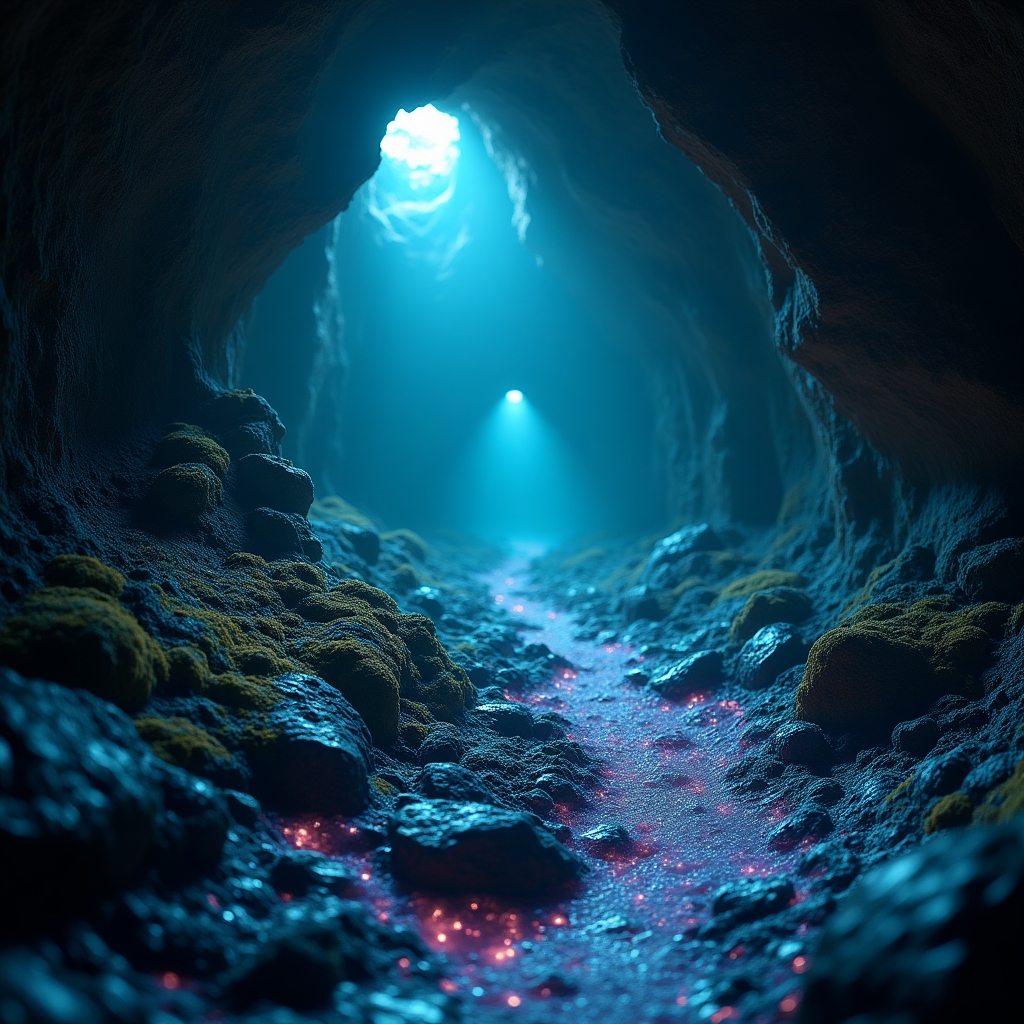In the hustle and bustle of modern life, it's easy to forget that a different world thrives beneath our feet. Picture this: hidden deep within the Earth's crust, a realm untouched by sunlight, where remarkable communities of microbes make a living from the very bones of the Earth itself. Not long ago, a team of Chinese scientists uncovered an astonishing survival strategy for these subterranean denizens—a way of life that might hold keys to otherworldly possibilities.
iN SUMMARY
- 🌍 **Deep Earth microbes** use hydrogen and oxidants for energy, produced during rock fracturing.
- 🔬 **Chinese scientists** illuminated this underground survival, potentially shaping how we search for life on other planets.
- 💥 **Earthquakes** play a crucial role in generating the chemical energy that sustains these microbial communities.
- 🚀 Discoveries might impact our approaches to astrobiology and understanding life as it could exist beyond Earth.
Unearthing Life Beneath Earth
According to a new study published by [Science Daily](https://www.sciencedaily.com/releases/2025/08/250806094130.htm "Science Daily Article on Earthquake Fractures and Microbes"), Chinese scientists have advanced our understanding of how life can survive far from the sun's warmth. They found that when rocks deep underground split due to seismic activity, they release hydrogen and oxidants. This chemical energy, produced naturally during an earthquake, becomes the lifeline for ancient microbes living within Earth's crevices.
In bustling city streets of Toronto, or somewhere in the expansive wilderness of the Rockies, lies a world driven purely by geology and chemistry. Could you imagine a life where everyday energy decisions were out of your hands—dependent solely on the tumult of the Earth?
The Chemistry of Survival: A Tale of Resilience
Think of fractures in rocks as nature's pantry for these underground microbes. With every jolt and tremor, Earth disburses hydrogen and oxidants—an irresistible cocktail for microorganisms adept at extracting life from the starkest of conditions. The process of rock fracturing generates these energy sources, fueling what we call *chemoautotrophy*, a system wherein life forms gain sustenance not from light, but from inorganic chemical reactions.
It's an elegant dance of survival, out of sight yet crucially alive. And while the idea might seem alien, it's active right here and now, deep below the world's major cities, like [New York City](https://inthacity.com/headlines/usa/new-york-news.php "New York City News Portal") or [Sydney](https://inthacity.com/headlines/oceania/australia/sydney-news.php "Sydney News Portal"). This unseen life hidden beneath modern achievements isn’t just fascinating—it’s fundamentally important to understanding life's versatility.
Why It Matters
Scientists have long pondered the possibilities of life beyond Earth. What would it look like? How does it survive in the harsh environments of Mars or Europa, one of Jupiter's moons? The discovery that microbial life on Earth can persist without sunlight, thriving instead on chemical energy produced by earthquakes, tantalizingly opens the door to understanding extraterrestrial life. Similar processes might well occur on other planetary bodies, where seismic activity and rock formations create energy havens for life forms.
With this groundbreaking insight, researchers, including those from [NASA](https://www.nasa.gov "Official NASA Website"), are re-thinking the frameworks we use to search for life beyond our planetary backyard. This discovery pushes us to readjust our parameters when searching for signals of life elsewhere in the universe.
The Role of Earthquakes
In this subterranean survival saga, earthquakes act as both destructor and provider. While typically seen as agents of chaos on the surface, deep underground, they assume a different role, becoming the flickering catalyst for life. Earthquakes crack open rocks, releasing stored gases like hydrogen. For microbes buried within these rocks, it's akin to manna from heaven.
Researchers worldwide are now turning their gaze downward, using this information to study how cataclysmic events might actually sustain life, delving into regions beneath cities like [Los Angeles](https://inthacity.com/headlines/usa/los-angeles-news.php "Los Angeles News Portal") and [San Francisco](https://inthacity.com/headlines/usa/san-francisco-news.php "San Francisco News Portal"). What they find can change the fundamentals of our scientific understanding.
Implications for Astrobiology
This Earth-bound study signifies much to scholars of astrobiology, a field busy with speculative study about how life might exist on alien worlds. The discovery of microbial life surviving within Earth's depths can expand the search for life on other planets, like Mars—a planet known for its seismic activity and rocky structure.
Team that with the Astrobiology institutes, such as [SETI](https://www.seti.org "Search for Extraterrestrial Intelligence Institute"). This newfound knowledge can illuminate possibly adaptable life on other rocky, earthquake-teeming planets, suggesting an entirely new arena of life-searching techniques.
- Rock fractures supplying hydrogen to sustain life.
- Microbes exploiting chemical reactions for livelihood.
- Potential parallel scenarios playing out on other planets.
Future Research and Innovations
As the science community continues to unravel these mysteries, we can anticipate more innovative explorations, both on Earth and in extraterrestrial spaces. From smart drilling technologies that can sample those precious underground pockets to using this knowledge to harness energy in new ways, the horizon is brimming with possibilities.
Amidst global scientific pursuits, local institutions such as the University of British Columbia and the University of Queensland, known for their geology and astrobiology programs, are well-poised to contribute significantly to these innovative explorations.
Wrapping Up with Hope
So where does this leave us? Pondering the hidden resilience of life beneath our feet, entwined within the rocky cracks and seismic shudders of Earth. It's a poignant reminder of life’s unyielding tenacity—and perhaps a metaphor of sorts for our frenetic human endeavors above ground. Could the vast universe be teeming with secret havens for life, much like Earth is? That's a question worth exploring!
As we continue to learn and wonder, we invite you to be a part of the vibrant [iNthacity.com](https://www.inthacity.com/blog/newsletter/ "Join iNthacity Community"). Engage with the questions: What hidden worlds lie not just under our feet, but among the stars? Could these insights impact daily technologies? Join the conversation, as together, we uncover not just the invisible life beneath us, but perhaps within us too.
Reflect on the wonder of the world below and above, and next time you step out, consider the unseen life that shares this planet. The journey underground reminds us—a world of possibilities lie just beneath our feet. And if nothing else, it's a reminder that life finds a way—often in the unlikeliest of places.
Disclaimer: This article may contain affiliate links. If you click on these links and make a purchase, we may receive a commission at no additional cost to you. Our recommendations and reviews are always independent and objective, aiming to provide you with the best information and resources.
Get Exclusive Stories, Photos, Art & Offers - Subscribe Today!
























Post Comment
You must be logged in to post a comment.